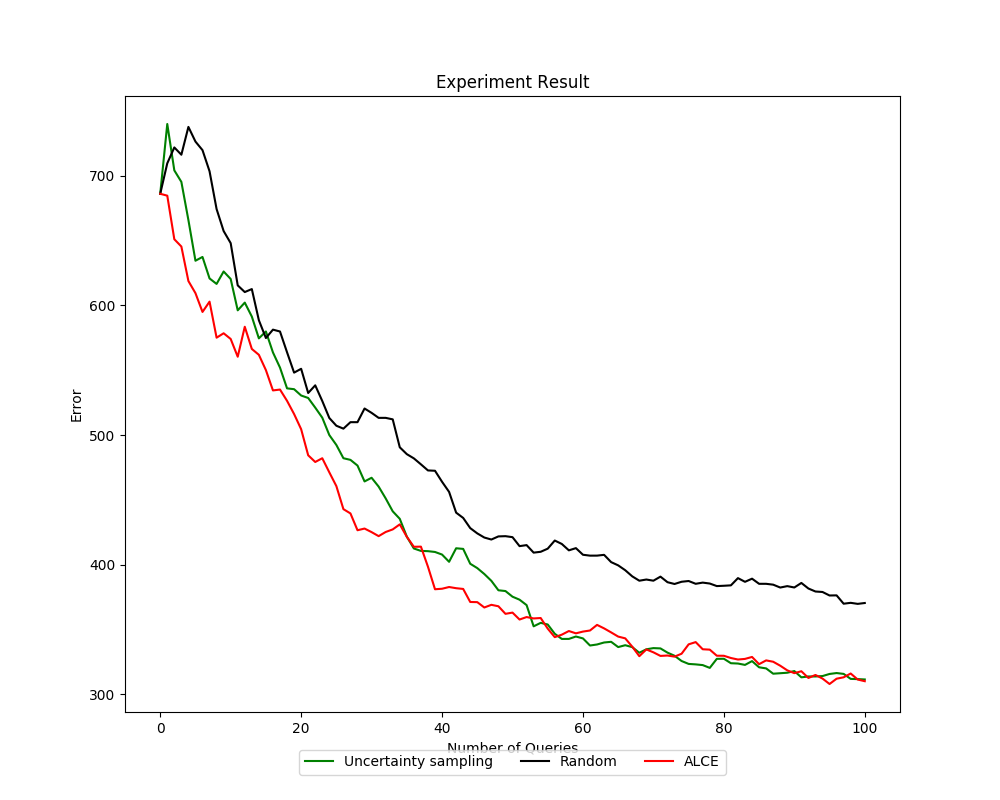Cost Sensitive Active Learning¶
Most active learning algorithms are designed to deal with a specific miss-classification error. Though in the real-world applications, the cost for miss-classification varies. Cost-sensitive active learning algorithms allows the user to pass in the cost matrix as a parameter and select the data points that it thinks to perform the best on the given cost matrix.
Assume we have a total of K classes, cost matrix can be represented as a K*K matrix. The i-th row, j-th column represents the cost of the ground truth being i-th class and prediction as j-th class. The goal is to minimize the total cost.
libact provided the algorithm Active Learning with Cost-Embedding (ALCE) (libact.query_strategies.multiclass.ActiveLearningWithCostEmbedding) dedicated to solve this problem.
Example file: examples/alce_plot.py
The multi-class dataset to use is the vehicle dataset from mldata retrieved by sklearn (sklearn.datasets.fetch_mldata(‘vehicle’)). The cost matrix is generated randomly.
1 | cost_matrix = 2000. * np.random.rand(len(target), len(target))
|
The target variable is a list of different classes.
The value cost_matrix[i][j] represent the cost of i-th class in target
being predicted as j-th class in target.
In this example, we compared ALCE with Ucertainty Sampling and Random Sampling.
The main difference in declaring an ALCE object is the cost_matrix should be
passed in as a parameter (ALCE(trn_ds3, cost_matrix, SVR())).
The result is shown as follows.
